Falling prices mean you can get more for your money than you could last year.
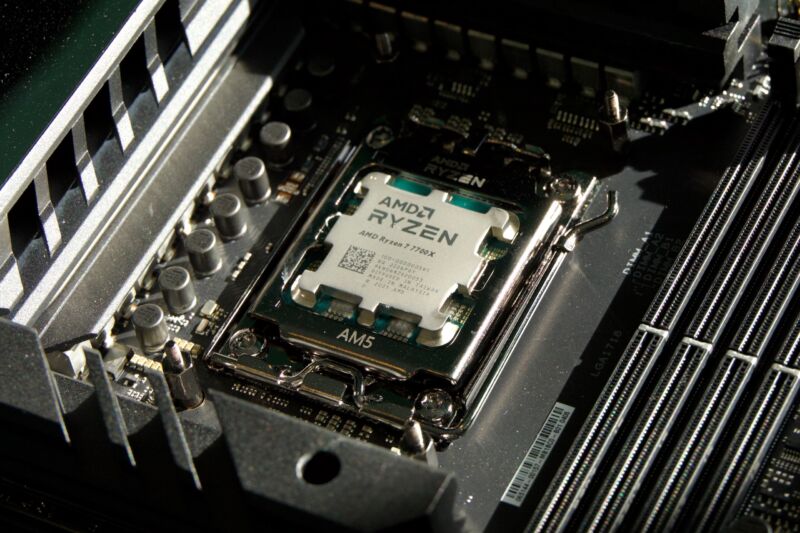
It’s been a while since our last system guide, and a few new products—most notably AMD’s Ryzen 9000 series CPUs—have been released since then. But there haven’t been many notable graphics card launches, and new ones are still rumored to be a few months off as both Nvidia and AMD prioritize their money-printing AI accelerators.
But that doesn’t make it a bad time to buy a PC, especially if you’re looking for some cost-efficient builds. Prices of CPUs and GPUs have both fallen a fair bit since we did our last build guide a year or so ago, which means all of our builds are either cheaper than they were before or we can squeeze out a little more performance than before at similar prices.
We have six builds across four broad tiers—a budget office desktop, a budget 1080p gaming PC, a mainstream 1440p-to-4K gaming PC, and a price-conscious workstation build with a powerful CPU and lots of room for future expandability.
You won’t find a high-end “god box” this time around, though; for a money-is-no-object high-end build, it’s probably worth waiting for Intel’s upcoming Arrow Lake desktop processors, AMD’s expected Ryzen 9000X3D series, and whatever Nvidia’s next-generation GPU launch is. All three of those things are expected either later this year or early next.
We have a couple of different iterations of the more expensive builds, and we also suggest multiple alternate components that can make more sense for certain types of builds based on your needs. The fun of PC building is how flexible and customizable it is—whether you want to buy what we recommend and put it together or want to treat these configurations as starting points, hopefully, they give you some idea of what your money can get you right now.
Ars Video
How Scientists Respond to Science Deniers
Notes on component selection
Part of the fun of building a PC is making it look the way you want. We’ve selected cases that will physically fit the motherboards and other parts we’re recommending and which we think will be good stylistic fits for each system. But there are many cases out there, and our picks aren’t the only options available.
As for power supplies, we’re looking for 80 Plus certified power supplies from established brands with positive user reviews on retail sites (or positive professional reviews, though these can be somewhat hard to come by for any given PSU these days). If you have a preferred brand, by all means, go with what works for you. The same goes for RAM—we’ll recommend capacities and speeds, and we’ll link to kits from brands that have worked well for us in the past, but that doesn’t mean they’re better than the many other RAM kits with equivalent specs.
For SSDs, we mostly stick to drives from known brands like Samsung, Crucial, or Western Digital, though going with a lesser-known brand can save you a bit of money. All of our builds also include built-in Bluetooth and Wi-Fi, so you don’t need to worry about running Ethernet wires and can easily connect to Bluetooth gamepads, keyboards, mice, headsets, and other accessories.
We also haven’t priced in peripherals, like webcams, monitors, keyboards, or mice, as we’re assuming most people will re-use what they already have or buy those components separately. If you’re feeling adventurous, you could even make your own DIY keyboard! If you need more guidance, Kimber Streams’ Wirecutter keyboard guides are exhaustive and educational.
Finally, we won’t be including the cost of a Windows license in our cost estimates. You can pay a lot of different prices for Windows—$139 for an official retail license from Microsoft, $120 for an “OEM” license for system builders, or anywhere between $15 and $40 for a product key from shady gray market product key resale sites. Windows 10 keys will also work to activate Windows 11, though Microsoft stopped letting old Windows 7 and Windows 8 keys activate new Windows 10 and 11 installs relatively recently. You could even install Linux, given recent advancements to game compatibility layers!
The budget all-rounder
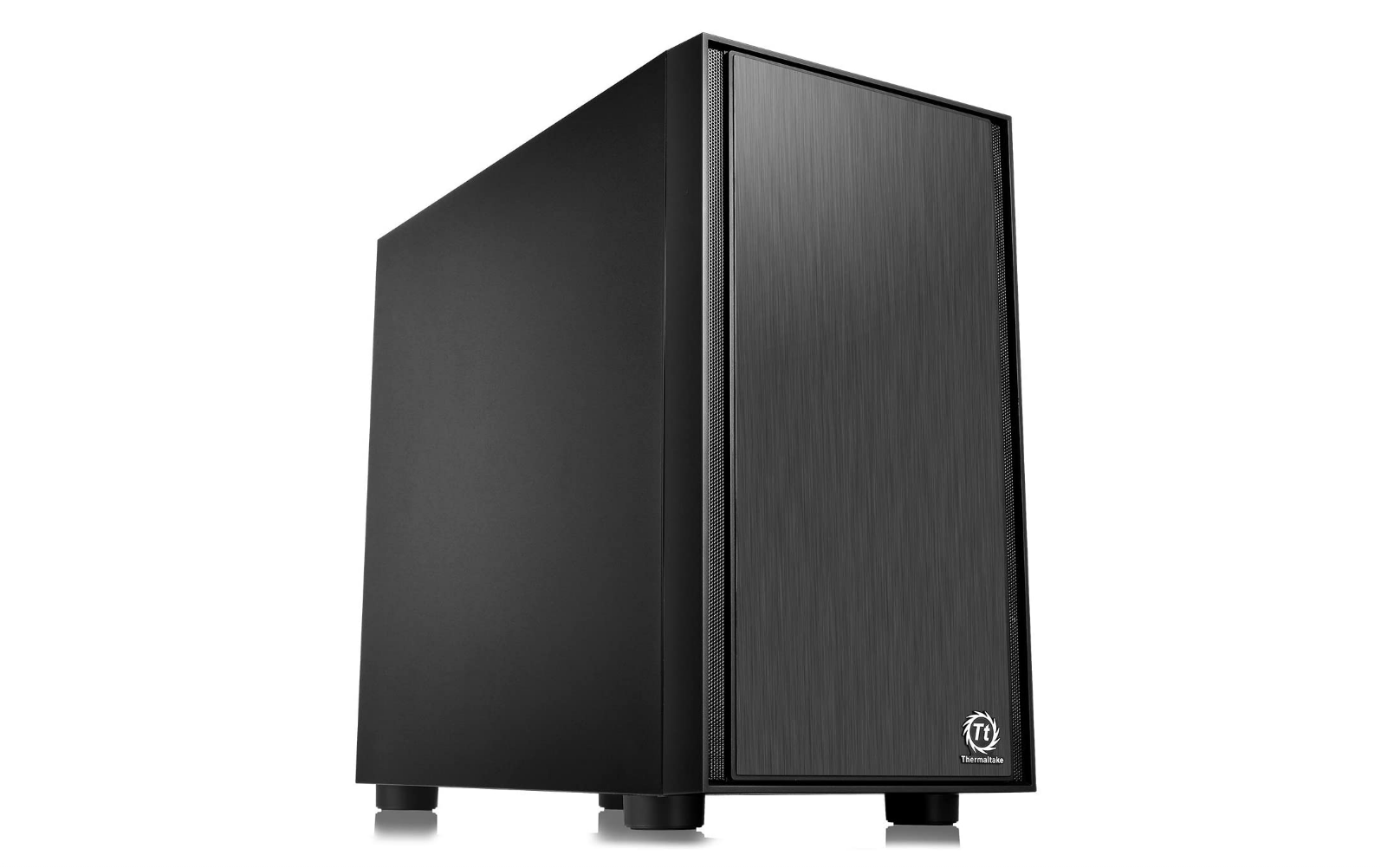
What it’s good for: Browsing, schoolwork or regular work, amateur photo or video editing, and very light casual gaming. A low-cost, low-complexity introduction to PC building.
What it sucks at: Can’t play many modern games, limited upgrade path, older CPU.
Cost as of this writing: $355
| Component | Model | Cost | Notes |
|---|---|---|---|
| CPU | AMD Ryzen 5 5500GT | $115 | 6-core Zen 3 |
| CPU fan | AMD Wraith Stealth (Included) | $0 | It’s a fan! |
| Motherboard | Gigabyte B450M DS3H Wi-Fi (Micro ATX) | $75 | Wi-Fi/BT, 4 RAM slots, one PCIe 3.0 M.2 slot |
| GPU | Radeon Vega iGPU (Included) | $0 | 7 GPU cores |
| RAM | GeIL Orion AMD Edition 16GB (2x8GB) DDR4-3200 kit | $30 | Two 8GB sticks |
| SSD | Crucial P3 Plus 500GB, or Western Digital WD Blue SN580 500GB | $40 | PCIe 4.0 interface |
| Power supply | Thermaltake Smart Series 600 W | $45 | 80 Plus certified |
| Case | Thermaltake Versa H17 | $50 | One 120 mm case fan preinstalled, 1x front USB 3.0, 2x front USB 2.0 |
The biggest disincentive for a low-end PC builder these days is that neither Intel nor AMD is putting all that much thought into their low-end products, and this has been the case for years now. Products at the Core i3 and Ryzen 3 level are consistently either barely updated from generation to generation (compare 2022’s Core i3-12100 to 2024’s i3-14100) or are ignored entirely (there is no Ryzen 3 desktop CPU in the 7000 series). Or they’re limited releases sold only to the PC manufacturers for their budget systems (the Ryzen 3 8300G).
In the absence of compelling budget products, previous-generation midrange CPUs become the best bet for a basic budget system, which does get you a competent PC but limits your future upgrade path.
This build has changed very little in the last couple of years, staying pretty close to our previous recommendation but with a few tweaks to keep it economical. Our last version of this build was almost $400; a cheaper CPU and lower power supply prices bring this one closer to $350. That leaves more of a budget for a monitor, keyboard, mouse, or webcam if you need them.
As before, we’ve put together an AMD socket AM4-based build that relies on a six-core Ryzen 5000-series CPU and an integrated AMD Vega GPU, but we’ve changed from a Ryzen 5 5600G to a Ryzen 5 5500GT. The two have similar specs, but the 5500GT is some $25 cheaper right now. Neither the CPU nor the GPU is spectacularly fast—the GPU isn’t even getting regular driver updates from AMD anymore—but both are good for browsing and productivity apps and will work fine for amateur video and photo editing and even for playing older or lighter 3D games in a pinch.
Our motherboard selection is still the Gigabyte B450M DS3H Wi-Fi—there are cheaper boards available, but this is usually the cheapest with Wi-Fi and Bluetooth built-in, and it also has four RAM slots and a decent port selection. Its one notable shortcoming is that it only has a single HDMI port, so if you want multiple monitors, you may consider spending $40 more on something like the Asus TUF Gaming A520M-PLUS or MSI PRO B550M PRO-WDH WIFI, both of which have an HDMI port and a DisplayPort.
The specific SSD isn’t super important here; 500GB is still plenty for a non-gaming PC, and anything around $40 to $45 is a decent price for a recent-ish brand-name drive. Ditto for the RAM, which should run you between $30 and $40 for a 16GB kit. The Thermaltake power supply has solid customer reviews and is 80 Plus certified, and it has the headroom for a midrange GPU if you decide to add one later; an also-suitable 500 W version exists, though as of this writing, it’s barely cheaper than the 600 W version.
The case is the most subjective part of any self-built PC, but the Thermaltake Versa H17 is still a solid all-rounder for budget builds. It’s understated and well-reviewed, it has three front USB ports, and it will run you just $50. Some reviewers have noted that air intake through the front panels is pretty poor even with additional fans installed, though intake through the top panel is better—this shouldn’t be a huge deal for cooling low-end systems, though it’s not the best case for hot, high-end GPUs or AIO CPU coolers.
You can prioritize upgradeability in a budget build, but it comes at a pretty high price premium without getting you a ton of immediate benefit. Build the same system but with a Ryzen 5 8500G CPU ($159), a Gigabyte A620M Gaming X AX socket AM5 motherboard ($120), and 16GB of bare-minimum DDR5-4800 ($48; $63 for DDR5-6000), and you’ve got a build that should be able to accept new CPU upgrades for at least a couple more generations, though a relative lack of PCI Express lanes in the 8500G makes it a more complicated choice.
That’s at least $107 more expensive—a 30 percent increase—than our Ryzen 5500GT system; you’ll get faster CPU and GPU performance, too, but it won’t fundamentally alter the things that the build is good or bad at. This is a lot to pay for theoretical flexibility, but it’s worth considering just because the cost of the system still lands under $500.
The budget gaming PC
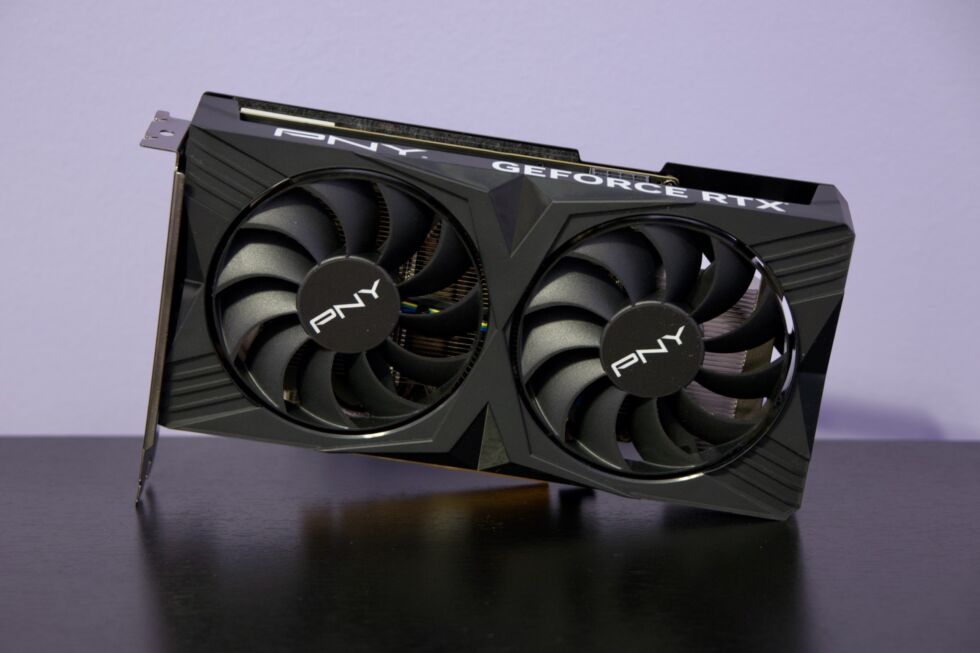
What it’s good for: All the same general-use stuff as our budget build, plus solid 1080p gaming performance in most titles.
What it sucks at: High-frame-rate or greater-than-1080p gaming in newer games, anything that benefits from tons of CPU cores.
Cost as of this writing: $707-710
| Component | Model | Cost | Notes |
|---|---|---|---|
| CPU | Intel Core i5-12400F | $112 | 6 P-core Alder Lake |
| CPU fan | Intel Laminar CPU fan | $0 | It’s a fan! |
| Motherboard | Gigabyte B760M Gaming Plus WiFi DDR4 | $120 | Wi-Fi/BT, 4 RAM slots, two PCIe 4.0 M.2 slots |
| GPU | Galax GeForce RTX 4060 8GB | $285 | 3x DisplayPorts, 1x HDMI |
| RAM | GeIL Orion AMD Edition 16GB (2x8GB) DDR4-3200 kit | $30 | Two 8GB sticks |
| SSD | Crucial P3 Plus 1TB or Western Digital WD Blue SN580 1TB | $65-$68 | PCIe 4.0 interface |
| Power supply | Thermaltake Smart Series 600W | $45 | 80 Plus certified |
| Case | Thermaltake Versa H17 | $50 | One 120 mm case fan preinstalled, 1x front USB 3.0, 2x front USB 2.0 |
I like to aim for $700-ish with this build to leave room for a budget gaming monitor and a decent keyboard and mouse for a total price of less than $1,000. This time around, our budget gaming build benefits not so much from newer parts as it does from lower prices, and for a PC like this, you take every spare dollar you can find and put it into a better GPU.
That means a step up from a generation-old AMD Radeon card to the Nvidia GeForce RTX 4060, which drew some criticism for being too small of an upgrade over the last-gen RTX 3060 but is nevertheless the best all-around choice for a midrange gaming system. It performs reasonably well and gets you access to Nvidia-specific benefits like DLSS upscaling and decent ray-tracing performance. Most go for around the MSRP of $300, though you can find a few going for $10 or $20 less.
Further Reading
GeForce RTX 4060 review: Not thrilling, but a super-efficient $299 workhorse
If you want to save some money and still put together a decent 1080p gaming desktop, the Radeon RX 6650 XT starts at around $220, and the RX 7600 starts at $250. Both are reasonable choices for the price. But the 4060’s speed, power efficiency, and access to Nvidia-specific technologies all make it worth paying a little more money for, especially since we’re saving a bit on other components.
On the subject of other components: Intel’s Core i5-12400F is on the old side at this point, but its price has also been slashed by $40 since the last time we updated this guide, and that’s $40 that can and should be spent on a graphics card instead. But if your budget is just a bit more elastic, the $160 Core i5-13400F nudges up the performance of the P-cores and adds E-cores to boot. Both the i5-12400F and i5-13400F have the benefit of being unaffected by the instability and crashing issues that have affected higher-end 13th- and 14th-gen CPUs.
It’s gotten a little more difficult to find a good micro ATX Intel board that includes all the features and expandability we prefer for a custom-built desktop—Wi-Fi and Bluetooth, four RAM slots, multiple M.2 slots, less-expensive DDR4 RAM support—but the Gigabyte B760M Gaming Plus WiFi DDR4 checks all those boxes at a slightly higher price than we’d like to see. The $90 MSI Pro H610M-G WiFi DDR4 could save you $30, but you only get two RAM slots and a single M.2 slot. Reviews also complain about a lack of fan headers, and there’s no header for front USB-C ports if your case has them; it’s just a lot more cut-down than we prefer.
Our other recommended components should be uncontroversial. A 16GB RAM kit should still be enough for midrange gaming, and a 1TB SSD is the bare minimum we’d consider for a gaming PC given the steadily increasing install size of AAA games. The 600 W power supply clears Nvidia’s official 550 W PSU recommendation for this GPU.
We’ve stuck with the Thermaltake Versa H17 in the interest of saving money—you can do worse than “understated and competent” for a budget gaming PC. But you could consider something like the $80 Asus Prime AP201, which has a front USB-C port and mesh front and side panels for better airflow. The $95 Lian Li Lancool 205M Mesh is also an option if you want to build something with a bit of built-in RGB lighting.
The sweet-spot gaming build
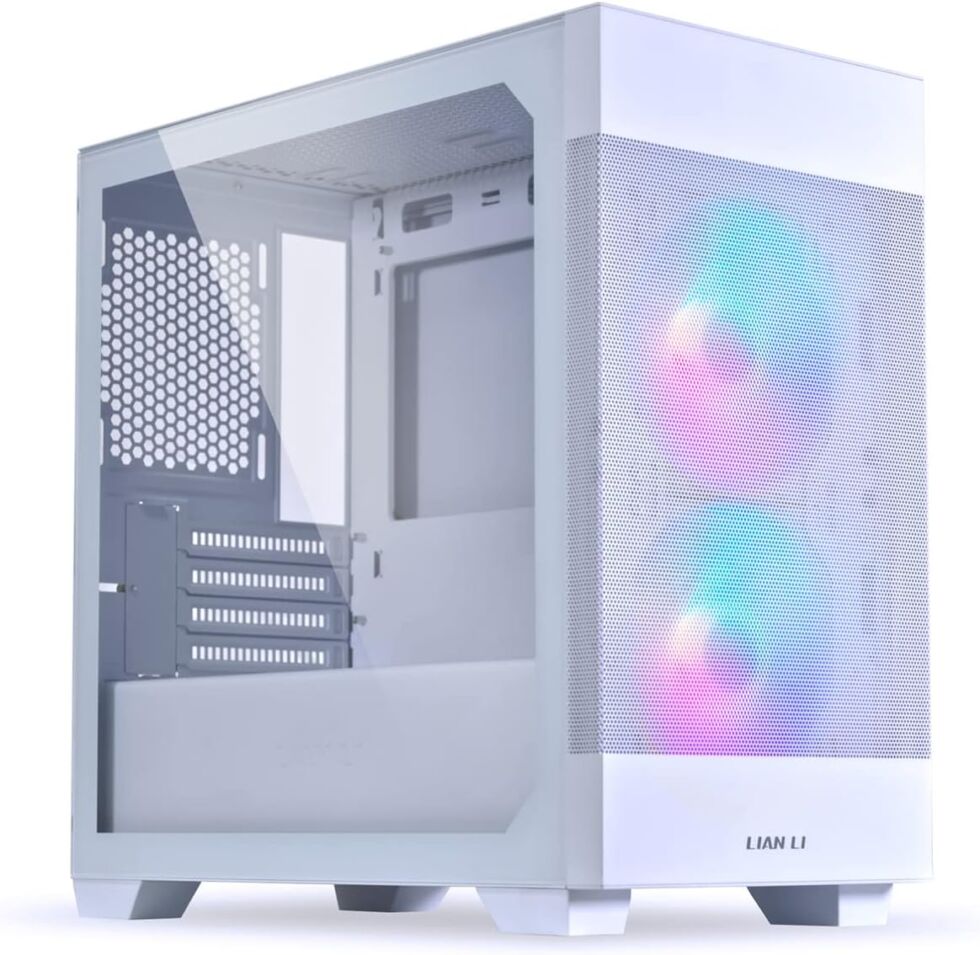
What it’s good for: Good high-fps gaming at 1440p, with 4K possible for some games.
What it sucks at: Heavily multithreaded CPU work, though it’s usable for this kind of thing in a pinch.
Cost as of this writing: $1,367-$1,405, depending on motherboard and case
| Component | Model | Cost | Notes |
|---|---|---|---|
| CPU | AMD Ryzen 7 7700X | $281 | 8-core Zen 4 |
| CPU fan | Vetroo V5 CPU cooler | $28 | Available in white, black, or pink with an RGB fan |
| Motherboard | MSI Pro B650-S WiFi (ATX)Gigabyte B650M Gaming Plus WiFi (mATX) | $130-140 | Wi-Fi/BT, 4 RAM slots, two PCIe 4.0 M.2 slots |
| GPU | PNY GeForce RTX 4070 Super 12GB | $590 | 3x DisplayPorts, 1x HDMI |
| RAM | Team T-CREATE EXPERT 32GB (2x16GB) DDR5-6000 kit | $86 | Two 16GB sticks |
| SSD | Western Digital WD Black SN770 2TB | $120 | PCIe 4.0 interface |
| Power supply | Thermaltake Smart BM3 650W Semi-Modular Power Supply | $60 | 80 Plus Bronze certified, native 12VHPWR connector |
| Case | Asus Prime AP201 (mATX)Corsair 4000D Airflow (ATX) | $72-$93 | 1x 120 mm fan, 2x front USB-A, 1x front USB-C2x 120 mm fans, 1x front USB-A, 1x front USB-C |
| Case (RGB) | Lian Li Lancool 205M Mesh (mATX)NZXT H7 Flow RGB 2023 (ATX) | $95-$100 | 2x 140 mm RGB fans, 2x front USB-A3x 140 mm RGB fans, 1x 120 mm RGB fan, 2x front USB-A, 1x front USB-C |
A cheaper Intel alternative
Cost as of this writing: $1,201-$1,224, depending on the case
| Component | Model | Cost | Notes |
|---|---|---|---|
| CPU | Intel Core i5-13400F | $160 | 6 P-core, 4 E-core Raptor Lake |
| Motherboard | Gigabyte B760M Gaming Plus WiFi DDR4 | $120 | Wi-Fi/BT, 4 RAM slots, two PCIe 4.0 M.2 slots |
| RAM | Teamgroup T-Force Vulcan Z 32GB DDR4-3200 | $51 | Two 16GB sticks |
| Case | Asus Prime AP201Lian Li Lancool 205M Mesh (RGB) | $72-$95 | 1x 120 mm fan, 2x front USB-A, 1x front USB-C2x 140 mm RGB fans, 2x front USB-A |
One approach to a mainstream gaming build would be to take our budget gaming build and upgrade it with a Core i5-13400F, 32GB of DDR4, a 2TB SSD, a 650 W power supply, and an RTX 4070 Super. All of these cumulatively bring its price up to just over $1,200.
But for these $1,000-and-up gaming builds, AMD’s AM5 platform has come down just enough in price to make sense, which is why the Ryzen 7 7700X is the star of our main 1440p gaming build this time around. We like the single-core performance gains relative to Intel’s Core i5, and for a PC this expensive, the AM5 socket’s longevity becomes a more relevant selling point; the 7700X’s Zen 4 architecture is also getting a small gaming performance boost from new Windows updates.
There are a few other places where we’ve bumped up the specs, but if you wanted to save more money, you could probably get away with 16GB of memory even in this build. We’ve seen some games that ask for more memory than that in the last couple of years, though, and we think 32GB is worth it for the peace of mind. You could use the fan that comes with the Ryzen instead of buying an aftermarket one, though the Vetroo cooler is a reasonably well-reviewed option that will lower your temperatures and get you some RGB if you care about that kind of thing. A 2TB SSD will let you install more games at once, but you could probably scrape by with 1TB.
We like the RTX 4070 Super because it’s reasonably fast and very efficient, great for 1440p gaming and usable for 4K gaming in less-demanding titles or with DLSS upscaling enabled. The Zotac model we’ve chosen uses the sometimes-controversial 12VHPWR power connector, but the semi-modular power supply we’ve chosen supports 12VHPWR natively, so you don’t need to worry about adapters.
That $590 price tag—more than you’d pay for a PlayStation 5, just for the GPU—does sting. If you’re willing to give up DLSS, the slightly cheaper card we’d recommend instead is probably AMD’s Radeon RX 7800 XT, which starts at around $470 these days. This GPU gets you 16GB of RAM instead of 12GB and is generally a hair faster than the non-Super RTX 4070 in our tests. The RX 7900 GRE is another respectable option, though once you’re spending the $540ish that it costs, you should probably just step up to the 4070 Super instead.
We have a couple of different case and motherboard recommendations here; the Gigabyte B650M board is microATX, while the MSI Pro B650-S is full-sized ATX—both are functionally similar, so pick the microATX board for a slightly more compact build or the full ATX board if you want more room for expansion.
Choose a case to match the size of your board. We’ve got four options here to cover both microATX and ATX board sizes and people who either do or do not want a bunch of RGB lighting.
A cost-effective workstation
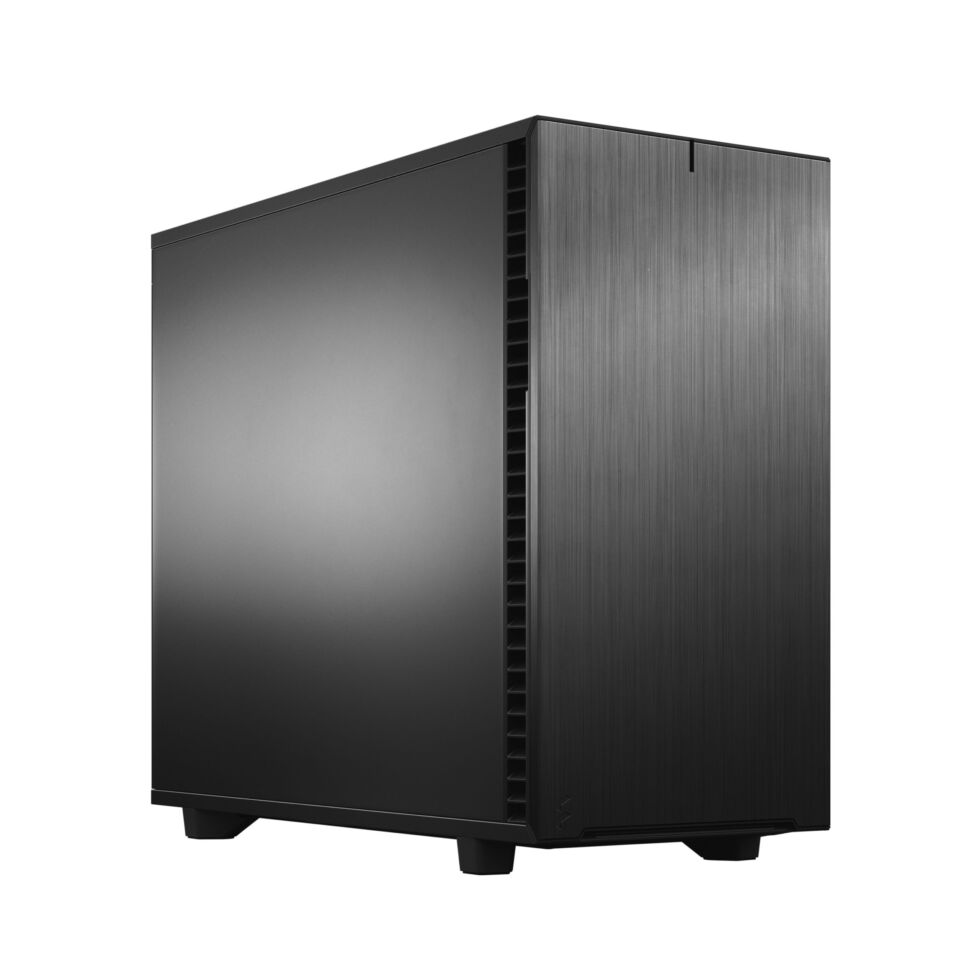
What it’s good for: Adobe apps, CAD software, and other high-end professional tools. Lots of room for upgrades and internal expansion cards, including at least three M.2 SSD slots and multiple PCIe slots.
What it sucks at: 4K gaming, though it’s totally usable as a gaming PC and would be a great one with a faster GPU installed.
Cost as of this writing: $1,396–$1,426
| Component | Cost | Notes | |
|---|---|---|---|
| CPU | Intel Core i7-14700 | $380 | 8 P-core/12 E-core Raptor Lake |
| CPU fan | Arctic Cooling Liquid Freezer III 280mm AIO cooler | $87 | Water cooler |
| Motherboard | Gigabyte Z790 UD AC | $180 | Wi-Fi/BT, 4 RAM slots, three PCIe 4.0 M.2 slots |
| GPU | Galax GeForce RTX 4060 8GB | $290 | 3x DisplayPorts, 1x HDMI |
| RAM | Team T-CREATE CLASSIC 64GB (2 x 32GB) DDR5 5600 | $159 | Two 32GB sticks |
| SSD | Samsung 990 Pro 1TB | $100 | PCIe 4.0 interface |
| Power supply | Corsair RM750e | $100 | 80 Plus Gold certified, 12VHPWR included, modular |
| Case | Lian Li O11 Air Mini | $100 | 2x front USB 3.0, 1x front USB-C |
| Case (alternate) | Fractal Design Define 7 | $130 | 2x front USB 3.0, 2x front USB 2.0, 1x front USB-C |
An AMD alternative
Cost as of this writing: $1,376-$1,406
| Component | Model | Cost | Notes |
|---|---|---|---|
| CPU | AMD Ryzen 9 7900X | $340 | 12-core Zen 4 |
| Motherboard | ASRock X670E PG Lightning | $200 | Wi-Fi/BT, 4 RAM slots, one PCIe 5.0 M.2 slot, one PCIe 4.0×4 M.2 slot, one PCIe 4.0×2 slot, one PCIe 3.0×4 M.2 slot |
We aren’t getting into fantastically expensive high-end workstation PCs here—you won’t find anything based on Threadrippers or Xeons. But we have tried to put together a flexible, expandable, cost-effective PC with a lot of CPU power, and one that will feel like a huge speed upgrade if you’re coming from an older 4- or 6-core system from a few years ago.
Consider these builds an alternative to the base-level workstations offered by boutique PC builders like Puget Systems, without the tech support that they offer but for less than half the money—the Fractal Design Define 7 is actually the exact case Puget uses for its ATX builds.
This build was more difficult to put together than it has been in past years. Normally, we like Intel’s higher-end Core i7 CPUs here since they come with gobs of cores for CPU-heavy work and are pretty cost-efficient compared to their Ryzen counterparts. But Intel’s high-end 13th- and 14th-generation CPUs have all been affected by a voltage-related bug that can cause crashing, instability, and permanent damage to your processor.
Further Reading
Intel details fixes for crashing 13th- and 14th-gen CPUs as BIOS updates roll out
The company has issued BIOS updates that it says fixes the root problem and has extended the warranty from three to five years (which includes CPUs you buy now, not just CPUs already out in the world). Those mitigations are enough that we’ll keep recommending Intel here, with a very large and skeptical asterisk. But we’ve also put together an AMD alternative if you’re finding Intel too hard to trust right now.
For both versions, we’ve poured some more money into the CPU and spent less on the GPU, though the balance will shift depending on what you’re doing. These are also both full-size ATX systems with less of an emphasis on RGB lighting (though sometimes, good cases with good airflow just happen to have big glass windows on the side anyway).
We’re defaulting to the Core i7-14700 on the Intel side and the 12-core Ryzen 7900X on the AMD side, which both give you a bunch of CPU cores for under $400. Intel added four extra E-cores to the Core i7 for the 14th generation while the Core i5 and i9 tiers stayed the same, making the i7 a decent step up for multi-threaded work. And while the 7900X is a couple of years old, it’s a lot cheaper than the 16-core Ryzen 9 7950X ($500), the 12-core Ryzen 9 9900X ($449), or the 16-core Ryzen 9 9950X ($624). Any of those chips will slot right into this build with no other changes, but the 7900X is definitely the bang-for-the-buck choice on the AMD side right now.
Both the Intel and AMD CPUs have integrated GPUs for driving additional monitors, and both can give you either better performance or better power efficiency depending on whether/how you tune their power limits. We’re recommending a 280 mm Arctic Cooling Liquid Freezer III liquid cooler—relatively inexpensive and mostly well-reviewed—for either chip to minimize throttling and maximize performance, but an AIO loop like this does make the PC slightly more difficult to put together compared to just installing an air cooler. Customer reviews mention particular difficulty installing it in AMD builds, due to the amount of pressure you need to apply to the cooling block to get it installed.
The inexpensive Vetroo V5 fan we’ve recommended for lower-end CPUs may struggle with these Core i7/Ryzen 9-tier CPUs when they’re fully loaded—they won’t melt, but they may throttle. If you want an air cooler, either because it’s cheaper or because it’s easier to install, look for a beefier dual-tower model with multiple fans. The $50 Scythe Fuma 3 generally gets good reviews from customers, professionals, and Redditors, and it ought to fit in either of our case selections.
If you’re mostly editing 2D photos or videos, you might not need a dedicated GPU at all (both of our builds’ motherboards have at least two video outputs to support multi-monitor setups with integrated GPUs or just to add even more screens than a dedicated GPU will support). If you’re doing a bunch of 3D rendering or GPU-accelerated computing, you might need the most powerful GPU you can afford, or multiple GPUs.
We’ve specced this build with an RTX 4060, which gets you four display outputs and access to Nvidia features like CUDA and OptiX for a reasonable price (it also supports CUDA Compute Capability 8.9, the highest level currently supported by any of Nvidia’s consumer or workstation products). It’s a broadly useful card that will run games reasonably well in a pinch; you can step up or down from there based on what you need; just remember that you’ll also want to boost the power supply as you add more powerful graphics cards; the 750 W Corsair model we picked should have enough headroom to support up to an RTX 4080, but if you want a 4090 or multiple GPUs, you may want to step up to the 850 W or 1000 W version.




